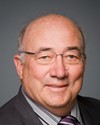If any compromise occurs, it has to be within the structure of the nominating committee. In fact, what just came out in April is quite interesting. I don't think people fully grasp the implications of it, because although the composition of this nominating committee is the same as that of the old election committee, the rules of voting are a bit different. It used to be the case that the nominating committee members could only choose one person, whether for nomination or election. This time around you have a low threshold to get people into the race, a 10% threshold—you get 10% votes from the committee. You may have up to five or ten people who then go up before the committee for the vote, to get to 50%.
That's what's interesting. In getting that 50%, for the first time the committee members can actually vote for more than one person, and that's never happened before. I think it's sometimes known as approval voting. What's interesting about it, and the way I've described it in an article, is that you have three types of voters in the nominating committee: those who vote for only pro-establishment people; those who vote for only the pan-democrats; and then those who are prepared to vote for both, maybe with the hope of having a more competitive election.
How big that chunk in the middle is we don't know. We know that those who only vote for the pan-dems may be about 16%. There might be enough there in 34% for a pan-dem to be nominated. There are many unknown questions there.
I think the best thing would be to just try the system, because ultimately it comes back to the question of the composition of that committee. Unfortunately, right now the government is not prepared to change it, but maybe the next time around it could be more liberalized. Maybe it could involve some directly elected members.
So there's lots of room for discussion.






